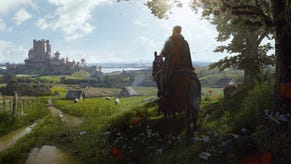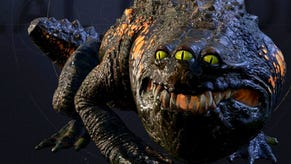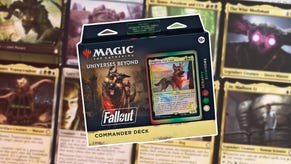Fatal Flaws: When Games Totally Screw You Over
Ever played a game and suddenly realized there's something horribly wrong with it? Something so wrong, it's rendered it unplayable? We have. These are our experiences.
This article first appeared on USgamer, a partner publication of VG247. Some content, such as this article, has been migrated to VG247 for posterity after USgamer's closure - but it has not been edited or further vetted by the VG247 team.
During our gaming escapades, we've all encountered bugs, crashes and even things sometimes subsequently described by the developer as "unforeseen errors." But have you ever run into a programming oversight that has caused your game to completely crap out and die? A showstopper? A terminal failure? A fatal flaw, even?
That's what we're looking at today, as we exhume games from the past that somehow managed to leave the developer's studio packing a rather unpleasant, game-breaking "surprise."

Jeremy Parish, Editor-in-Chief
Game: Teenage Mutant Ninja Turtles (NES)
It should have been a home run: A game on the world's most popular console, based on its most popular cartoon franchise, by a developer capable of making the NES stand up and sing. Did you ever play Castlevania III? TMNT was by some of the same people!
To judge strictly by superficial measures, TMNT was just amazing. The music was rich and energetic, in the classic Konami style; the visuals looked great; and it even held true to the property's essence: Players could swap between any of the four Ninja Turtles at any time, and each had his own combat specialty. Not bad, considering that the developers were completely mystified by the property (according to composer Hidenori Maezawa, the response to TMNT in Japan was, "Why turtles? Why ninja?"). Outlandish cultural misappropriation notwithstanding, Konami approach the job with their usual professionalism and created a cool-looking game that embraced the Turtles property. It even incorporated a sort of RPG-like overworld view between stages to make it something more than just a straightforward platformer.
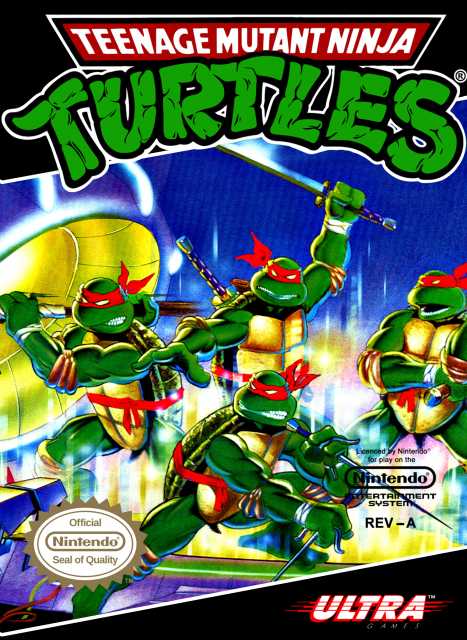
And yet… something was off. Great as TMNT looked and sounded, it wasn't all that much fun. As much as the audio-visual aspects of the game stood head and shoulders above other licensed properties on NES, it didn't play nearly as well as something like DuckTales. It was the controls — they were just too fussy. The turtles tended to jump in a high arc without much forward momentum, their floaty controls frequently undermining the integrity of the level design. One jump in particular has become a sort of infamous sticking point, as it requires the turtles to make a pixel-perfect leap in a low sewer where their jumping physics causes them to hit their head on the roof and drop quickly below. This proved equally frustrating in the Technodrome, where hazardous environments and powerful enemies in narrow spaces could bring a hard-fought quest to an abrupt end. Oh, and don't even ask about the underwater physics; the swimming sequence in the dam area remains one of the darkest moments on NES. Cowabunga? More like Cowabungled, amirite!?

Jaz Rignall, Editor-at-Large
Game: Alice in Videoland (Commodore 64)
I've encountered a number of games over the years that have had all sorts of bugs and flaws, but the one I just have to go with is a game that has the dubious distinction of receiving the lowest-ever review score from me. And considering I've reviewed thousands of games over the last 30 years, that means it's got to be pretty special. In a totally crap kind of way.
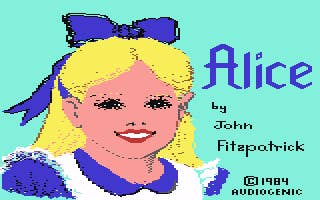
The game in question is Alice in Videoland, a Commodore 64 game that was released in the US in 1984. It was a simple multi-minigame arcade adventure that at the time was noted for its good quality graphics, made possible by the fact that it was a disk-only game, enabling the developers to load one graphics-heavy level at a time.
Long-dead publisher Bug Byte picked up the UK distribution rights for Alice in Videoland. C64 disk drives were still very expensive there, and the vast majority of gamers just had tape drives, so the decision was made - like with many other disk games of the era - to port it to cassette and turn it into a multi-load game. Basically, the computer would load a level, pause the tape, and then wait for you to finish the level before loading the next one. Clunky and horrible, yes, but that was the only solution at the time.
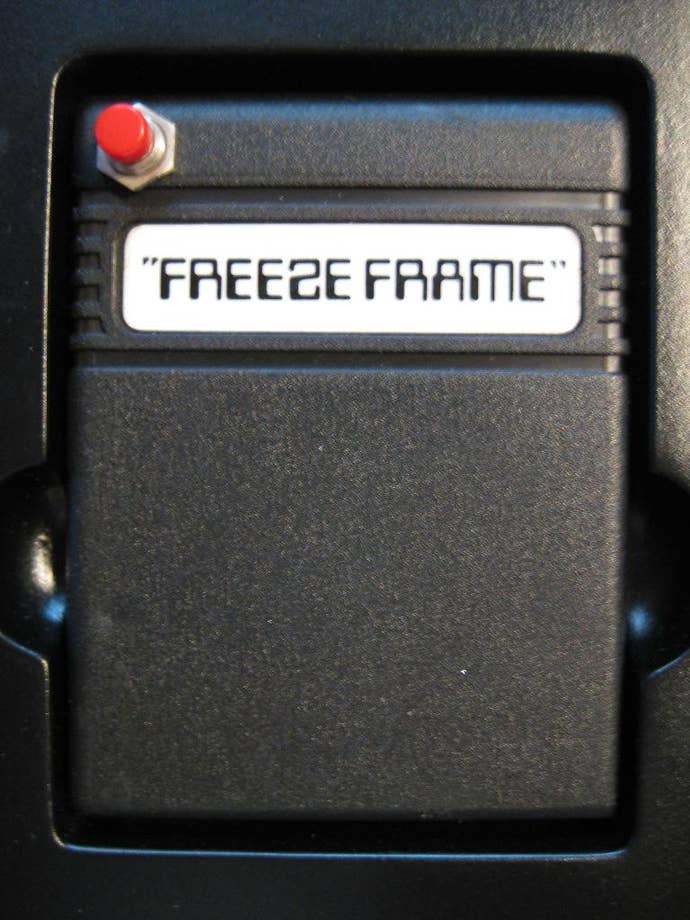
Anyway, the Alice in Videoland cassette arrived for review and I duly played it. The first level loaded, and it took me about three or so minutes to work my way through it (about the same amount of time as it took to load), and then the screen went dark as the game got ready to load the next level. But instead of the cassette drive activating, the prompt, "Insert Disk 1" appeared on the screen. The C64 looked for the non-existent disk drive twice, and then reset itself in confusion. And that was it. Done.
Basically, someone at Bug Byte had ported Alice in Videoland to cassette using something called a Freeze Frame - a predecessor to the Game Genie that you inserted into the C64's cartridge port and could use to hack and/or copy games. What this clown had done is loaded the disk version of the game, Freeze Framed it to cassette, quickly checked to see if it loaded - which level one did - but didn't bother to play past level one to witness the game's fatal flaw.
I called the company after discovering this shambolic fiasco, but nobody seemed to care. They'd already manufactured thousands of cassettes, and they just pushed it out to retail: a one-level game that'd keep you entertained for perhaps five minutes. It was one of the more reprehensible and cynical things I've seen a publisher do, so I gave it no less than 3%. A percent each for the box, tape, and game.
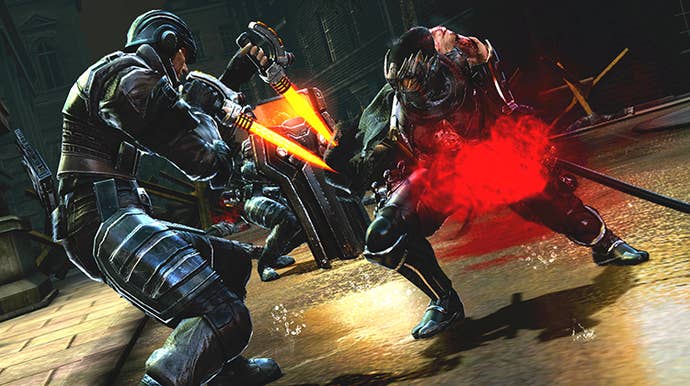
Mike Williams, Associate Editor
Game: Ninja Gaiden 3

When Tecmo rebooted the Ninja Gaiden series, it wasn't quite the same game, but it was still awesome. A painfully difficult action series that required precision reflexes to succeed. I worked so hard at Ninja Gaiden 3, fighting bosses and doing stages again and again. It was a hard fought battle, but I felt I was near the end of the game. It was late, so I turned off the game and went to sleep.
Next day I load up Ninja Gaiden 3 on Xbox 360 only to find my save game was corrupted. Hours of blood, sweat, and tears, all for naught. I couldn't figure out what had gone wrong. I tried desperately to bring the save back to life. I prayed to arcane gods for luck. No dice.
I go online and find out that I'm not the only one with the issue. The problem is if you exit Ninja Gaiden 3 (or NG2 apparently) from the Xbox Live Dashboard. The best way is to exit back to the main menu first, then close the game via the dashboard. Closing directly from the dashboard has a chance of corrupting your save.
I raged. What kind of publisher wouldn't test what happens is such a normal situation? Who lets a bug like that out the door? I was so p**sed that I vowed never to play another Ninja Gaiden game again (the second time I've done that in my life). Luckily, outside of the Spark-developed Yaiba: Ninja Gaiden Z, there hasn't been another Ninja Gaiden game. Perhaps my rage has special godlike powers.
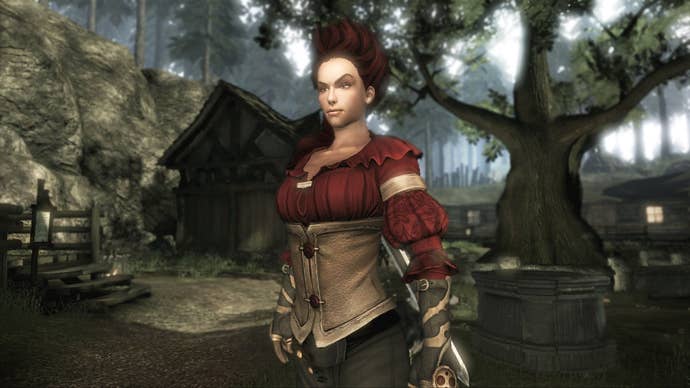
Kat Bailey, Senior Editor
Game: Fable 3
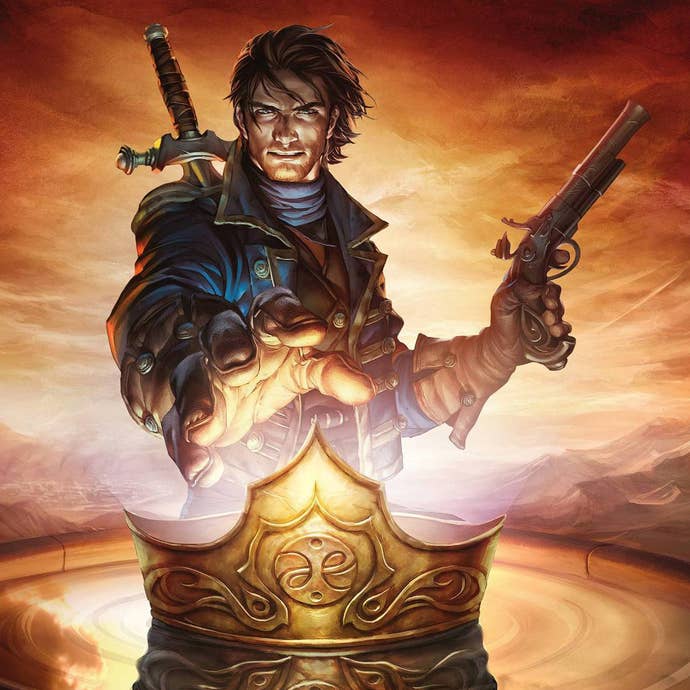
At first blush, Peter Molyneux has a really interesting concept for Fable 3. As the story progresses, you rise from rebel to king (or queen), and are ultimately charged with keeping the trains running on time In being handed the proverbial keys to the kingdom, however, you are faced with what are meant to be a series of hard choices that boil down to: "Do you want to be a tyrant and make enough money to save everyone from invading monsters, or do you want to be a righteous and broke monarch who ultimately lets the kingdom burn?" If you want to be a good king, Fable 3 wants to punish you and make life difficult to show that the path of righteousness is a painful one. Except that there's a third way, and it's not really very painful at all.
See, in Fable 3 you can buy up property that generates gold in real-time. Leave the game on long enough and you will eventually have more than enough money to combat the forces of darkness when they arrive. Because Fable 3's second half moves in phases, it's possible to leave the game running for as long as you want and advance at your leisure. It's a flaw that so completely undermines the core concept as to make the second half of the game virtually meaningless, making it a case study in how bad design can destroy whatever point a game is trying to make.
It's kind of a shame because Fable 3 is a really nice looking game with a fairly interesting arc leading up to the overthrow of the king, and combat that is enjoyable if shallow. The second half could have taken an already decent game and elevated it into something truly special, but instead, it more or less ruins the story. Oh well, we'll always have Skyrim, I suppose.
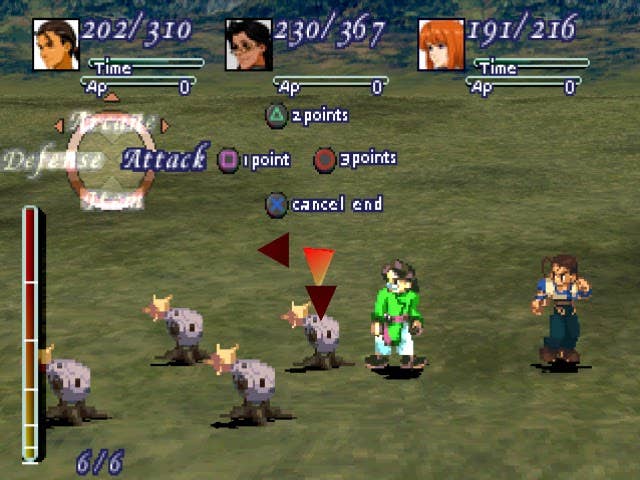
Bob Mackey, Senior Writer
Game: Xenogears
When I was 16 years old, I played through most of Xenogears—listen, that's just what 16-year-olds do. While I still don't have any insight into the story it tried to tell, the sheer scope of Xenogears blew my young mind to the point where concerns about narrative didn't matter. The anime cutscenes, giant robots, and fantastic soundtrack brought me into the game, and no amount of confusion or slow-moving text was about to stop me from seeing it through to the end.
If you ever played Xenogears, then you know that the second disc of the game takes a drastic turn. Instead of the plot unfolding in a typical fashion, it's instead narrated by the main character. Events that normally played out through the theatrics of tiny sprites would now pass by with a paragraph of text and a single image. Astoundingly, this second disc would actually allow you to play Xenogears at times instead of merely absorbing it, and this is where my troubles started. The game skipped over the expected dungeon-crawling with a few lines of text, and dropped me off right before a boss. A boss, I might add, that I had no chance of surviving against.
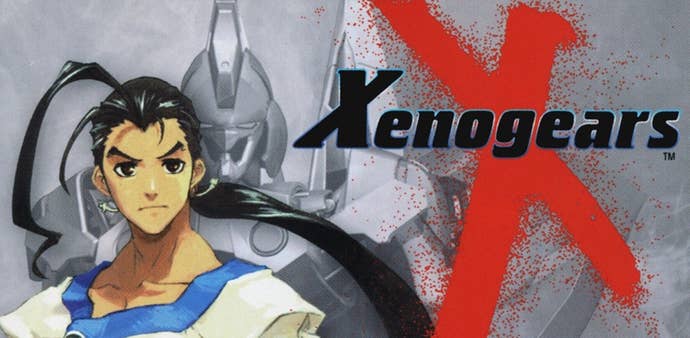
It's one of the worst situations a game ever put me in: After sinking that much time into Xenogears, I had no way to make progress. I couldn't grind for experience, and even though the game gave me the chance to visit a merchant before the boss fight, the lack of random encounters that prevented me from gaining levels also prevented me from earning money. Thankfully, time was a nearly unlimited commodity back then, so my issues with Xenogears were only met with a shrug. Had this happened in 2014, and I think I'd be organizing a class action lawsuit.

